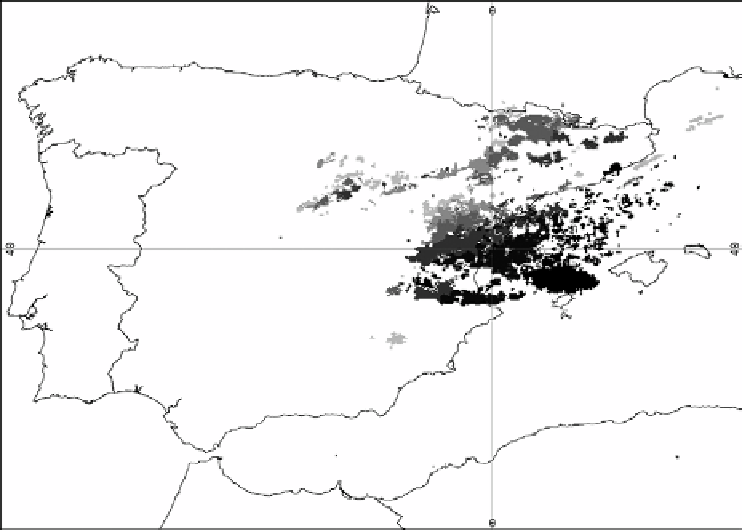Agriculture Reference
In-Depth Information
(diameter
<
0.60 cm; Moreno
et al.
2004
). In this community,
Cistus ladanifer
is the
dominant species, and also the one with the highest proportion of dead and fine
fuel.
Sarcopoterium spinosum
, in the eastern part of the basin, also accumulates
large proportions of standing dead fuel (Seligman & Henkin
2000
).
The Mediterranean Basin flora is also rich in species with a high volatile oil
content, and these oils increase flammability. Examples include many Lamiaceae
(
Thymus
,
Rosmarinus
,
Salvia
,
Lavandula
) and some Cistaceae (
Cistus ladanifer
,
C. populifolius
).
Ignition Patterns and Fire Behavior
Natural fires occur as a consequence of lightning. Especially in summer, dry
storms can be an important fire ignition source (Soriano
et al.
2005
;
Fig. 4.6
),
and foehn winds in different parts of the basin (see
Box 1.3
) greatly facilitate
the spread of fires. Currently only a small proportion of the annual area burned
(
<
10%) is derived from lightning-ignited fires. It is probable that in the past
(before the spread of agriculture), when native vegetation covered larger and
more continuous areas and fire suppression did not extinguish these fires,
Fig. 4.6
Image of the Iberian peninsula (Portugal and Spain) on August 1, 2005 (mid summer)
showing the location of the 15 134 lightning strikes that were registered in 12 hours. Different
shadings indicate 2-hr periods, from 14:00 (light gray, left) to 24:00 (dark, right). (Image from

